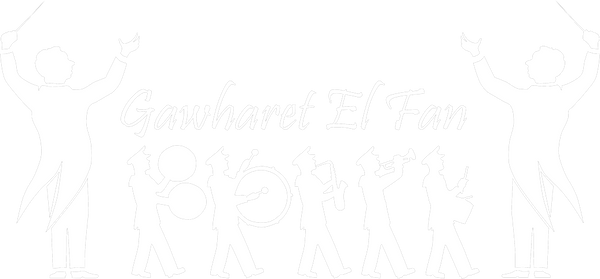
How to Choose the Perfect Darbuka Rhythm to Play
Share
Choosing the best Darbuka rhythm to play is something that many people early on in their journey might struggle with. For some it will come very easily, however, for others, it can be tough to figure out. You may be in a situation where you’re with other musicians and don’t know how to enter their rhythm, or what rhythm would go with the music which is being played. In this article, we’ll look at how to choose the perfect Darbuka rhythm to play in any given circumstance.
If you're still looking for guidance on getting started with playing Darbukas, read our article on how to start learning to play.
Situation A: There are other percussionists present
If there are other percussionists present, you could have one of two roles in the mix:
You could act as the rhythm controller. It would be your job to keep the rhythm together and hold the basic beat to allow the other percussionists to experiment with their rhythms with fancy ornamentation. They can do this because they know that you are holding together the core beat, so they don’t have to worry about it. For example, if you were playing with a Riq player, you could hold just a basic Maqsum on your Darbuka, while the Riq player would be free to experiment with fancy ornamentation techniques and really bring the rhythm alive.
Alternatively, you could swap these roles, and you could be responsible for ornamenting while the other percussionists hold the basic beats. For example, if you were playing with a Daff player, very often the Daff player would just a play a basic beat on the Daff, allowing you, as a Darbuka player, to explore new and exciting ornamentation techniques!
Situation B: You are the only percussionist
What do you do when you are the only percussionist playing? How are you supposed to choose from the many, many unique and different rhythms out there?
We have some general guidelines that can be followed to help you choose the perfect rhythm to play in any circumstance.
Time signatures
Staying in time is one of the most crucial parts of playing with a group and your ability to judge and recognise time signatures is what makes up a large part of this. Let’s say you were going to join a group of musicians, and they were playing in 4/4 at approximately 100 BPM, most Darbuka players would immediately think Maqsum, and just jump into the rhythm. However, you can only do this if you know that they are playing in 4/4 and at 100 BPM. This is where an understanding of time signatures and your own internal rhythm comes into play; You have to be able to acknowledge the time signatures and be able to respond and use them. In another example, if you were trying to join musicians who were playing in 3/4, you definitely wouldn’t be able to enter with the Maqsum rhythm because you would require a 3/4 rhythm, like Vals. In another example, if they were playing in 10/8, you’d need a 10/8 rhythm!
Iqa’
Iqa’ is an important concept in Arabic Music, and nearly all competent practitioners would agree that it definitely deserves its own mention. Iqa’ is the basic (or skeletal) rhythm. The Iqa’ is where the points of emphasis are in the rhythm. For example, if you were to review any of the drum tabs in our Darbuka courses (like the one mentioned at the bottom of this article), you would find certain notes highlighted, mostly Doum and Tek notes. It’s very important to match the Iqa’ of whatever is being played by other musicians or performers with the rhythm that you will play. If their rhythm has a completely different Iqa’, you will change the shape of the music when you enter the rhythm, and this could be completely detrimental to the group’s music as a whole. Let’s say for example that the Zaffa was being played, a rhythm with a very clear Iqa’, and you try to enter that rhythm with a Maqsum. You’d destroy the Iqa’ of the existing rhythm and this would be problematic.
Appropriateness
Certain rhythms are more much more appropriate than others for certain occasions. Some rhythms are purposed for set scenarios, and by not playing that rhythm in that scenario you may be stepping on someone’s toes; it’d be the incorrect thing to do. Let’s say you were doing a wedding gig, and when the bride entered you didn’t play the traditional wedding beat, the Zaffa. This would be a very poor choice and people would wonder why you didn’t play the obvious rhythm at the correct time. There are set rhythms to use at set times.
Another example of this might be if you were playing at a Zikr (a religious chant) with whirling dervishes present. If there are dervishes and it’s a Zikr, you should definitely be playing Ayub somewhere. It’s the right rhythm to play at that specific time! If you start with a completely different rhythm when the more appropriate Ayub could possibly have been played, the dervishes might be a little upset.
Furthermore, you can choose a rhythm by location. For example, if playing with Turkish or Greek musicians, they tend to favour rhythms like Karachi and Cifte Telli more than a standard Maqsum, whereas Arabic musicians would definitely expect a Maqsum in there somewhere because it’s such an important and critical part of their genre. As such, assess the situation and choose a rhythm which will make all of the other musicians more comfortable.
Guitarists
Another handy trick when choosing a rhythm is looking at the strum pattern of any guitarists present. For example, many guitarists play a lot of songs using a strum pattern that consists of various up and down strokes. Some of the down-strums are usually accented also. Take a look at the below guitar strumming pattern:

There are 2 different down-strums, and one up-strum. On the first beat and the fourth beat, there are strong down-strums. At these points, you can play a Doum. During the light down-strums, you can play a Tek, and in the up-strums, you can play a Ka. This particular guitar strumming pattern can be written as a drum tab, to look like this:

You can then add ornaments to this as you please, enabling you to play along effectively with the guitarist(s). Remember to keep the mood the same as the rest of the musicians, and don’t ornament so much that the mood is lost. If you’d like to learn more about ornamentation and try your hand at some fun an interesting drum tabs, check out the Darbuka Mastery Program!
Join our family
We pride ourselves in offering everything you could possibly need in diving into the world of Arabic music, be it instruments or knowledge. Look no further than our store for a diverse assortment of Arab instruments! Or if it's expertise you seek... check out our Darbuka Mastery Program!
We would be honoured for you to share our passion. Read into Our History, or perhaps discover how our products are made through our Innovation page. Once you've sated your appetite, invite others to join the family too through our social media buttons below! Also, subscribe to our mailing list to keep up with all of the latest goings-on here at Gawharet El Fan!

